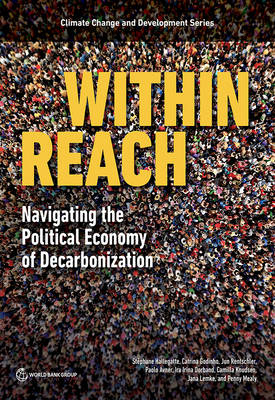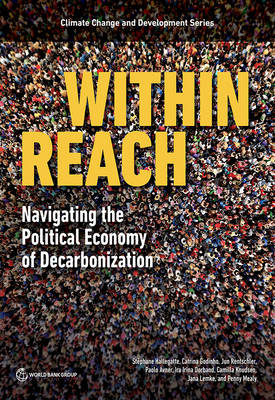
Bedankt voor het vertrouwen het afgelopen jaar! Om jou te bedanken bieden we GRATIS verzending (in België) aan op alles gedurende de hele maand januari.
- Afhalen na 1 uur in een winkel met voorraad
- In januari gratis thuislevering in België
- Ruim aanbod met 7 miljoen producten
Bedankt voor het vertrouwen het afgelopen jaar! Om jou te bedanken bieden we GRATIS verzending (in België) aan op alles gedurende de hele maand januari.
- Afhalen na 1 uur in een winkel met voorraad
- In januari gratis thuislevering in België
- Ruim aanbod met 7 miljoen producten
Zoeken
Within Reach
Navigating the Political Economy of Decarbonization
Stephane Hallegatte, Catrina Godinho, Jun Rentschler, Paolo Avner, Ira Irina Dorband, Camilla Knudsen, Jana Lemke, Penny Mealy
€ 65,45
+ 130 punten
Omschrijving
Climate change presents a unique challenge in that policy makers need to balance the speed and scale required to achieve global objectives within the time required to ensure political acceptability and social sustainability. Within Reach: Navigating the Political Economy of Decarbonization identifies the key political economy barriers and explores the options to address them through four key recommendations: * Climate governance: strategically adapt the institutional architecture and embed climate objectives into a positive development narrative. Strategic governance institutions that reflect societal goals--such as climate change framework laws, longterm strategies, or just transition frameworks--can alter the political economy, set clear objectives, facilitate coordination across actors, and help monitor progress and hold decision-makers accountable. * Policy sequencing: balance short-term feasibility and long-term ambition. Because the political economy and institutional context are dynamic and can be influenced by policies, policy makers can select their priorities, not only to make policy implementation feasible but also to actively build capacity and change the political economy and institutional context, building momentum toward the long-term objective and transformation. * Policy design: focus on people and manage the distributional effects of climate policies. Climate policies have heterogenous impacts across households, sectors, and locations. Active labor policies, reskilling programs, compensations and transfers, place-based policies, and green industrial policies can be used to protect vulnerable populations, facilitate a just transition, and make policies more acceptable and sustainable. * Policy process: use public engagement and communication to improve design and legitimacy. Civic engagement can improve a policy's design, enhance legitimacy, foster compromise, and help identify unintended consequences early. Effective communication can make reforms more accessible to the public and increase support. This book shows how appropriate governance frameworks, strong institutional capacity, well-designed policies with adequate compensation measures, and early engagement with all stakeholders are essential strategic elements to building consensus and momentum for transformative policies. By deploying these tools, policy makers can navigate the urgency in climate action and its political economy challenges to achieve their long-term climate goals and secure a livable planet.
Specificaties
Betrokkenen
- Auteur(s):
- Uitgeverij:
Inhoud
- Aantal bladzijden:
- 168
- Taal:
- Engels
- Reeks:
Eigenschappen
- Productcode (EAN):
- 9781464819537
- Verschijningsdatum:
- 10/01/2024
- Uitvoering:
- Paperback
- Formaat:
- Trade paperback (VS)
- Afmetingen:
- 203 mm x 267 mm
- Gewicht:
- 498 g

Alleen bij Standaard Boekhandel
+ 130 punten op je klantenkaart van Standaard Boekhandel
Beoordelingen
We publiceren alleen reviews die voldoen aan de voorwaarden voor reviews. Bekijk onze voorwaarden voor reviews.









